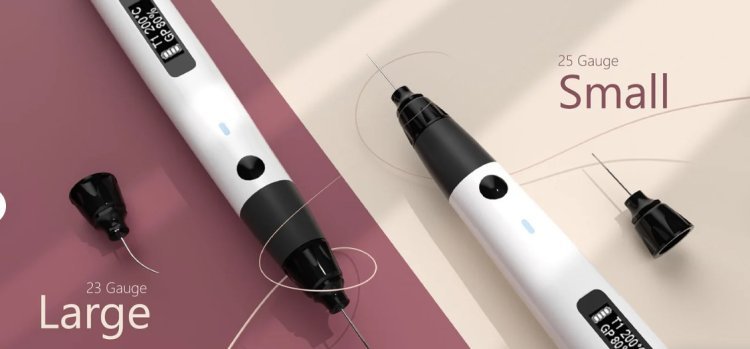How Advanced Endodontic Instruments Improve Root Canal Success
The integration of advanced endodontic instruments has significantly improved the success rates of root canal treatments. From NiTi rotary files and electronic apex locators to ultrasonic irrigation and bioceramic sealers, these innovations enhance precision, efficiency, and patient comfort.

Root canal treatment has evolved significantly over the years, thanks to advancements in endodontic instruments. These modern tools not only enhance precision but also improve patient outcomes, making root canals more efficient, less painful, and highly successful. In this article, we will explore how advanced endodontic instruments contribute to the success of root canal procedures.
The Importance of Endodontic Instruments in Root Canal Treatment
A root canal procedure involves removing infected or damaged pulp, cleaning and shaping the canal, and sealing it to prevent further infection. The success of this process heavily relies on the efficiency and accuracy of endodontic instruments. Traditional instruments, while effective, had limitations in terms of flexibility, precision, and time efficiency. However, modern advancements have addressed these challenges, improving treatment outcomes.
Key Advanced Endodontic Instruments and Their Benefits
1. Nickel-Titanium (NiTi) Rotary Files
How They Work:
NiTi rotary files have revolutionized the shaping and cleaning of root canals. Unlike traditional stainless-steel files, which are rigid, NiTi files offer enhanced flexibility and strength.
Benefits:
- Greater resistance to breakage
- Improved flexibility for navigating curved canals
- Faster and more efficient cleaning of canals
- Reduced risk of canal transportation and perforation
2. Electronic Apex Locators (EALs)
How They Work:
Electronic apex locators help determine the precise length of the root canal by measuring the electrical resistance between the instrument and the surrounding tissues.
Benefits:
- More accurate canal length measurement compared to radiographs
- Reduced need for multiple X-rays, lowering radiation exposure
- Improved treatment precision and success rates
3. Ultrasonic Irrigation Devices
How They Work:
These devices use ultrasonic vibrations to activate irrigation solutions, effectively cleaning and disinfecting root canals.
Benefits:
- Enhanced removal of debris, bacteria, and biofilms
- More effective penetration of irrigation solutions into dentinal tubules
- Improved cleaning of complex canal anatomy
4. Endodontic Microscopes and Magnification Loupes
How They Work:
Endodontic microscopes and high-magnification loupes provide enhanced visualization of the root canal system, allowing dentists to see minute details that would otherwise go unnoticed.
Benefits:
- Improved detection of cracks, fractures, and hidden canals
- Higher precision in cleaning and shaping
- Increased success rates in complex cases
5. Bioceramic Sealers
How They Work:
Bioceramic sealers are a new generation of endodontic sealants used to fill the root canal after cleaning and shaping. These materials offer superior biocompatibility and sealing properties.
Benefits:
- Excellent adhesion and sealing ability
- Biocompatible and non-toxic to surrounding tissues
- Long-term stability and reduced chances of reinfection
6. Reciprocating File Systems
How They Work:
These files use a back-and-forth (reciprocating) motion to clean and shape the canals more effectively while reducing stress on the file.
Benefits:
- Lower risk of file breakage
- Improved efficiency in shaping canals
- Faster procedures with reduced patient discomfort
How These Advancements Improve Root Canal Success Rates
1. Higher Precision and Accuracy
Modern instruments enable endodontists to work with greater accuracy, ensuring complete removal of infected tissue and optimal canal shaping.
2. Reduced Treatment Time
Advanced rotary files, ultrasonic devices, and reciprocating systems help streamline the procedure, making root canal treatments quicker and more comfortable for patients.
3. Enhanced Cleaning and Disinfection
Ultrasonic irrigation and bioceramic sealers help ensure the complete removal of bacteria and debris, reducing the risk of reinfection and post-treatment complications.
4. Lower Risk of Procedural Errors
Flexible NiTi files and electronic apex locators minimize the chances of errors such as canal perforation, instrument breakage, or overfilling.
5. Improved Patient Comfort and Satisfaction
With advanced instruments reducing treatment time, pain, and complications, patients experience a more comfortable and successful root canal procedure.
Conclusion
The integration of advanced endodontic instruments has significantly improved the success rates of root canal treatments. From NiTi rotary files and electronic apex locators to ultrasonic irrigation and bioceramic sealers, these innovations enhance precision, efficiency, and patient comfort. As technology continues to evolve, the future of endodontics looks even more promising, ensuring better outcomes for both dentists and patients alike.
What's Your Reaction?















